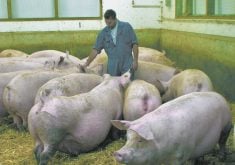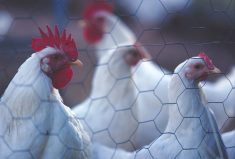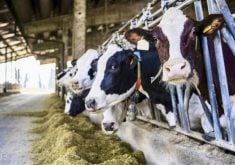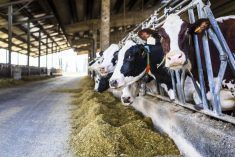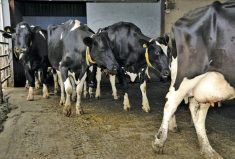Dairy farmers faced challenges dealing with mould in corn in 2018, as crop farmers dealt with the widespread DON outbreak.
Dairy animals can manage mould levels in small doses but once levels reach a certain point, the feed becomes toxic.
Why it matters: Mouldy feeds can typically cause performance losses of five to 10 per cent, even if they don’t produce mycotoxin.
Moulds can develop in different stages, whether during the growing season or storage and can lead to the production of toxins like zeralenone and vomitoxin (DON).
Milking cows find mouldy feeds less palatable so it reduces their dry matter intake. It’s important to keep vomitoxin levels under one part per million (ppm) and zearalenone under 0.5 ppm on a dry matter basis in the total diet for the dairy cattle.

“The longer the exposure to high levels of mycotoxins, the greater the risk of suppressed immune systems, higher SCC (somatic cell count), lower DMI (dry matter intake), lower production and poorer reproductive performance,” says Matt Groen, ruminant nutritionist with Cargill Animal Nutrition.
The symptoms of mycotoxins in dairy cattle do not show immediately, but because it is fed continuously, the effects become more pronounced. The higher the mycotoxin level, the greater the risk.
As well, high-producing dairy cattle are at a greater risk because there is a higher rate of passage — less time for the rumen microflora to deactivate the mycotoxins.
Low fibre diets, poor feed management and low effective fibre diets have a higher risk.
Read Also
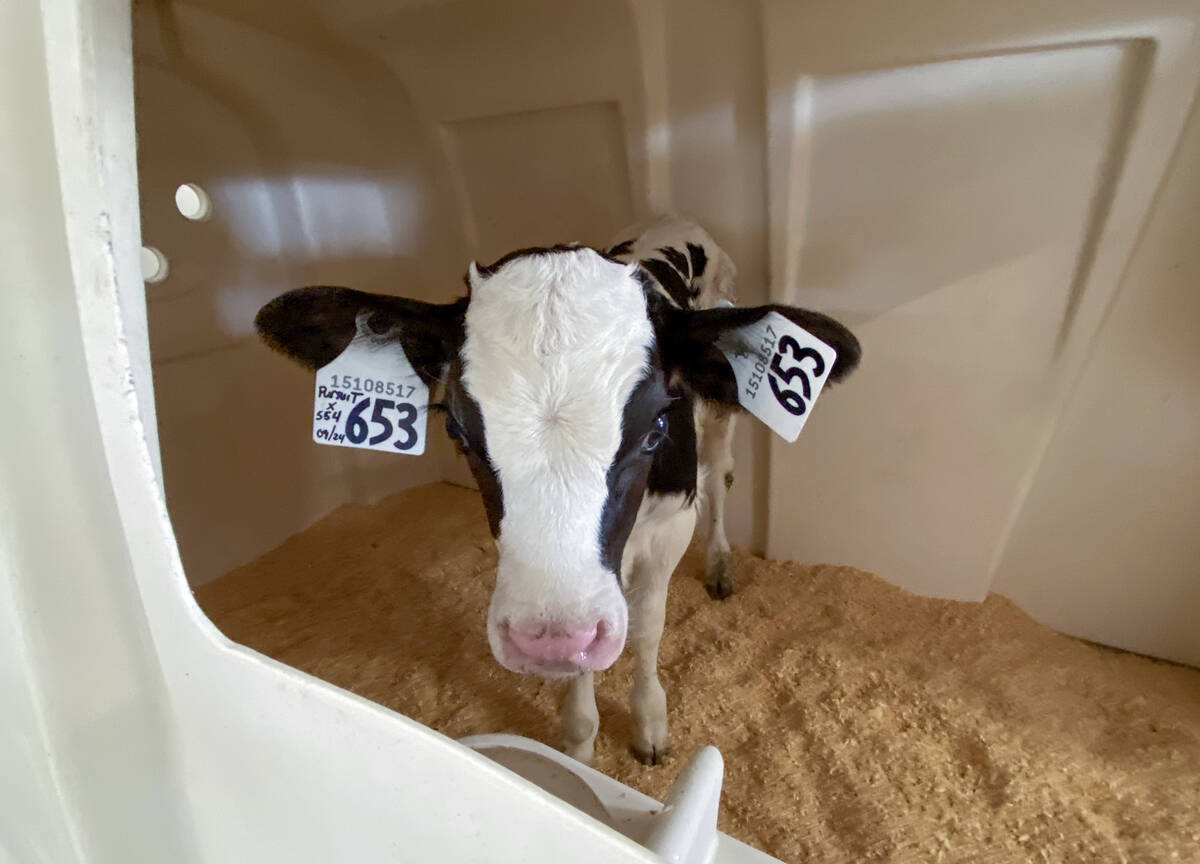
Lactanet turns methane expertise into business opportunity
Lactanet’s new fee-for-service breeding tool initiative to reduce greenhouse gas emissions in Canadian and Swiss Holstein herds will launch in April 2026.
“Fibre-digesting rumen microbes are most effective at deactivating mycotoxins, therefore feeding or management practices that lead to lower rumen pH will increase the risk,” says Groen.
It’s important to have all feed tested by a laboratory before feeding to understand the levels the farmer is dealing with.
“You can’t tell just by looking at a feedstuff whether it has mycotoxin contamination. Visible mould is not a sure sign mycotoxins are present, and absence of visible mould is not a sure sign your feed is mycotoxin-free. Only laboratory testing can provide answers,” says Tom Wright, dairy specialist with Ontario Ministry of Agriculture, Food and Rural Affairs (OMAFRA).
Feed companies can assist farmers on appropriate sampling and results interpretation.
Groen suggests the following strategies to mitigate risk:
- Test all corn products to determine the level of DON in the rations.
- Test all loads of commodities coming in.
- Use an effective toxin binder and ensure the binder is well mixed and used in all groups — lactating and dry cows.
- Dilution is the solution to pollution.
- Consider the use of other additives to stabilize the rumen and support the immune function.
When the mycotoxin levels reach a harmful level, the toxins can contribute to depressed performance, acute clinical symptoms, or both. If there is a severe production drop or acute clinical symptoms appear, Wright suggests that the feed be further tested for a range of toxins.
Watch for toxins in distillers grains, as the toxin level can be multiplied three times in the ethanol-creation process.
Removing fine particles, dust and lighter grain by cleaning the grain can help to substantially reduce mycotoxin level. As well, diluting contaminated feed with toxin-free-feed can help reduce the toxin level to an acceptable amount.
DON levels found during the fall of 2018 was a topic that received a lot of attention but as the year moved forward the concern began to dwindle.
“There was [a lot of buzz around the topic] last fall after harvest when the numbers being reported got a lot of attention,” says Wright. “I think as we moved further into feeding it, managing it has for the most part figured out in the livestock sector. The toxin levels and affected acres were higher than normal in 2018 but ruminant animals have better abilities to detoxify DON that poultry or swine don’t so there were some feeding opportunities for the ruminant sectors as well.”






